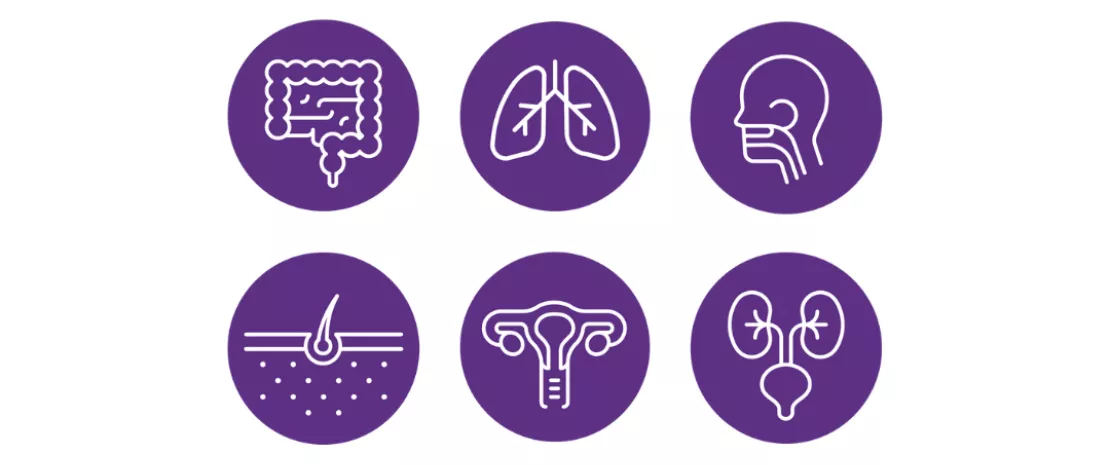Microbiota: a well-connected network that influences health
The latest scientific research suggests that our microbiota form an interconnected network linking the gut, lungs, skin, mouth, urinary tract, and genital tract. Communication between these ecosystems may greatly influence our health and susceptibility to disease.
- Learn all about microbiota
- Microbiota and related conditions
- Act on your microbiota
- Publications
- About the Institute
Healthcare professionals section
Find here your dedicated section
Sources
This article is based on scientific information

About this article
The gut microbiota is the most well-known of the body’s microbiota. However, the body hosts many other microbial ecosystems, each of which receives considerable attention in scientific publications and the media. Each new study shines further light on the decisive role they appear to play in our health. Let’s take a closer look at this vast “network”.
Human microbiota: a community of microorganisms...
The human microbiota is made up of the set of microorganisms – mainly bacteria, but also viruses and fungi – that live in our body. The vast majority (70%) are found in the digestive system, which is home to 1.5 kg of bacteria. But five other organs also (sidenote: Host The body provides food and shelter to the microorganisms that colonize it. ) a microbiota: the skin, mouth, lungs, urinary tract, and genitalia. The microorganisms in the microbiota are (sidenote: симбиотические Тесная и взаимовыгодная связь между двумя или более организмами ) . We provide them with the necessary conditions for survival and in return they contribute to the proper functioning of our body (digestion of food, protection against infection, synthesis of vitamins). A win-win situation! A balanced microbiota helps ensure good health. On the other hand, an unbalanced microbiota – or dysbiosis – is conductive to numerous diseases.
... within a network of interconnected ecosystems
At first glance, the body’s various microbial ecosystems appear to influence only their respective host organ. However, numerous studies have shown that an imbalance in one organ can have an impact on the others. For example, a disturbed gut microbiota has been linked with certain diseases of the skin (dermatitis, psoriasis) or lungs (asthma, chronic bronchitis, cancer), while poor oral hygiene increases the risk of developing lung infections. The latest scientific research suggests that these different ecosystems form an interconnected network with the gut at the center. Gut-brain axis, gut-skin axis, gut-lung axis, gut-mouth axis, gut-liver axis... and so on. The gut channels information and acts as a relay with peripheral ecosystems.
Is the gut the only control tower?
At the same time, some studies suggest that exchanges between different regions of the body can take place without the gut’s involvement (e.g. lung-mouth axis or exchanges linked to anatomical proximity, such as between urinary and genital microbiota). Thus, the various microbiota distributed among the six organs form a network in constant communication which significantly influences our health.
Promising implications for research and medicine
Research on the microbiota is still in its infancy. To confirm the hypothesis of an interconnected network of microbiota centered around the digestive system, more research is needed on the microbiota as a whole. Despite this, the applications in medicine seem promising: by restoring the balance of one ecosystem, it may be possible to modify the balance of another, thus leading to innovative treatment strategies.
Recommended by our community

"Interesting" - Brian Gorman (From My health, my microbiota)

















